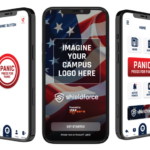Campus Safety Conference Content
A significant number of safety and security-related incidents that occur in college communities involve the use and/or abuse of alcohol and/or drugs. Historically, institutions across the nation have struggled to appropriately address this widespread problem. Vivian Faden, Ph.D., of the National Institute on Alcohol Abuse and Alcoholism (NIAAA), says that NIAAA has put much time and energy into developing a decision tool that helps schools address harmful and underage student drinking.
RELATED: How to Assess Your Alcohol and Drug Abuse Prevention and Response Program
Faden will be presenting Targeting Harmful and Underage Student Drinking: Using CollegeAIM to Choose Your Interventions Wisely at the Campus Safety Conference East, which will take place in Washington, D.C., July 25-26.
Having served as one of two scientific editors of The Surgeon General’s Call to Action to Prevent and Reduce Underage Drinking and leader of NIAAA’s Underage Drinking Research Initiative, Faden has published articles in peer-reviewed journals in the areas of prenatal alcohol effects, underage drinking and alcohol epidemiology.
In this Q and A, Faden discusses the overall issues associated with harmful and underage college student drinking and how CollegeAIM (College Alcohol Intervention Matrix) can serve as a comprehensive tool for identifying effective alcohol interventions.
Campus Safety: Why is underage drinking such a difficult challenge for colleges and universities to tackle?
Faden: I think college and university staff dealing with this problem are often frustrated. Schools try to do good things in this area, but the people who are charged with choosing and implementing the programs get frustrated when they don’t see much progress as a result of their efforts. Then the alcohol problems on campus begin to seem intractable. Another issue is the need to respond to emergencies. When colleges and universities are in crisis mode is not the best time to figure out what the best evidence-based interventions are. That’s where using CollegeAIM to plan ahead and put programs into place can help.
Campus Safety: Why did the NIAAA get involved with the issue of harmful and underage drinking on campus?
Faden: At NIAAA, we have a long history of supporting important research on drinking among college students. Currently, we have an advisory group of college presidents that we work with often. One of the things they’ve told us is that they really need a way to navigate through all of the information out there on harmful and underage college drinking interventions and a way to systematically examine all the possible things that they could put into place.
Campus Safety: How is the organization addressing these challenges?
Faden: We decided to develop CollegeAIM as a decision tool for colleges. We engaged some of the top researchers in the field to review the scientific literature and rate 60 different types of interventions across a wide range of parameters. Then we used that information to develop two matrices (one individual and one environmental), that school staff can use to see how different individual and environmental interventions measure up. Simply put, they can see how much evidence there is to support the effectiveness (or ineffectiveness) of the various interventions they are currently using, as well as learn about other interventions they may want to consider.
Campus Safety: What’s different about CollegeAIM, versus other intervention tools and techniques?
Faden: CollegeAIM is distinctive because of the breadth of its research and analysis, the expertise of its contributors and its user-friendly format. We define 60 different interventions and provide information about them. We cover the costs, barriers to implementation, and quality of the available research on each of the interventions and much more. CollegeAIM is the result of a multi-year collaboration involving 16 leaders in college alcohol intervention research. We’re pretty proud of it because it’s not just a fat booklet of information and a fancy website. It represents a tremendous amount of time and effort spent analyzing decades of scientific literature. There’s a lot of scientific rigor behind this project. And the result is two easy-to-use matrices and a wealth of other resources, all presented in an accessible and user-friendly way.
The third annual Campus Safety Conferences are education and training events for anyone who has a stake in ensuring the public safety and security of our nation’s schools, universities, and colleges. Taking place in Washington, D.C., July 25-26 and Long Beach, Calif., Aug. 9-10, the conferences provide full-day training workshops, a campus police chief and a K-12 safety panel, dozens of conference sessions, and more than 35 companies showcasing their products, services, and technologies.
To register for the Campus Safety Conferences, visit CampusSafetyConference.com. Vivian Faden, Ph.D., will be speaking at CSC East, Higher Ed Track, on July 26th.
Helpful links:
- Al-Anon Family Groups (for family members and friends of alcoholics and addicts): www.al-anon.alateen.org
- Alcoholics Anonymous: www.aa.org
Photo via Flickr













